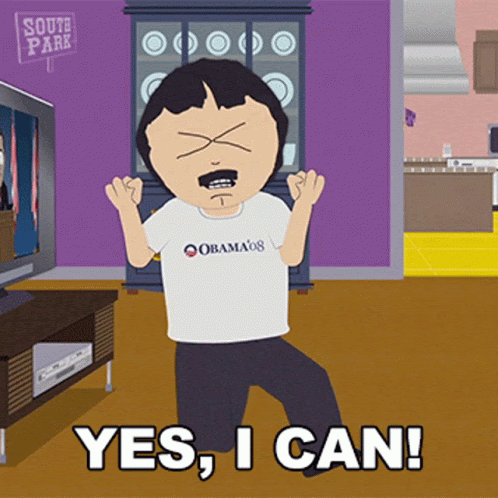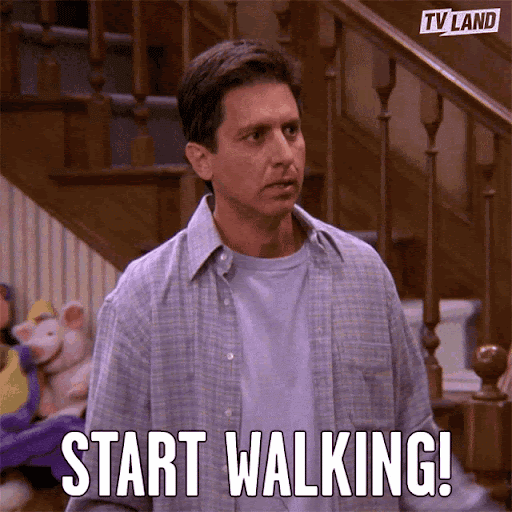When it comes to training, many people are seeking longevity. I would say at least a third of everyone is after this. The other two thirds are after performance, and/or aesthetics. You do not have to fall into the trap of thinking that you can only train for one of these, but, you will need to have one of these as your focus. While a majority of my content will be based on performance training, longevity is my secondary focus, and will become my main focus, when I retire as an athlete, like many others. I think it is crucial to understand how to keep the body going for as long as possible, because as a coach, it will force you to understand efficiency. While the application will likely change, the principles remain the same; when it comes to longevity and performance training.
In this article I am going to go in depth about the book title “The Blue Zones”. It is an impactful book that I read in college, for my Health Promotion class. If you have a college education, you probably are in the same boat as me, understanding that you use a small percentage of what you learned in school; in your job. However, this is one of the most impactful books you can read to understand longevity.
Don’t you want to be like this guy at his age?

The “Blue Zones” book by Dan Buettner is a very interesting book that contains a lot of helpful information about health and longevity. The book talks about several different places, where the life expectancy is close to 100 years old. These places are referred to as the “Blue Zones”. These places that he mentions in the book are: Okinawa, Sardinia, Loma Linda, Costa Rica, and Greece. Many of these communities have similar lifestyles, which contribute to their healthy lives. Some of these similarities include exercise that is found in daily activities, having a diet high in fruit and vegetables, and having a strong positive spiritual attitude. However each culture has some differences in their lifestyles that provide unique healthy benefits for them.
Some of the differences in these blue zone cultures vary from the way they get exercise, to specific foods they consume in their diets. Karia, Greece, is well known for commonly drinking wine in their diets. Although this area does not have much money and is known to be poor, wine provides health benefits that create a strong and healthy heart that allow them to avoid heart disease and complications as they age. Another healthy drink that is found in their society is goat milk. Unlike cow milk, goat milk does not contain lactose, so it does not require the enzyme, lactase, to break down inside the body. What is very unique about goat milk is that it contains a stress relieving hormone, called tryptophan. Other healthy habits of these Greeks are drinking herbal tea, napping, and occasionally fasting. All in all, most of the health benefits for the Karians include stress-reducing behaviors and foods, which, combined with healthy eating habits, lead to very long and proliferate lives.
The next blue zone, Loma Linda, California, is the only one mentioned in the book that is located in America. It does not shock me that if there were to be at least one in America, it would be in California. The unique aspect of this society is the health benefits achieved from spending time with like-minded people. It may seem a bit strange that something like this can make health benefits for people, but it plays a huge role in living stress free. Always having people back up your ideas and thoughts, and you doing the same for them, will cause a stress free environment and boost each other’s confidence and self worth. Also, the social networks are greater so they have more people in general that care for eachother. Something this blue zone does that aids a healthy diet, is snack on nuts. Nuts contain a sufficient amount of protein, as well as good fats that we need in our body. They also make a perfect snack, because they can be brought on the go, anywhere.
The next blue zone talked about is Okinawa, Japan. Their major key in their society lies within the sense of purpose they have, even when they are at a very old age. This means they have an objective and feel needed by others. The sense of feeling needed is important for not becoming depressed, and staying mentally strong. Many people in American culture work until they retire, and then essentially have nothing to do, and sometimes do not feel needed. Other than feeling emotionally better, they also benefit from unique foods that they eat. Soy is one of them, which has a very high nutritional value, and is plant based. Also, gardening is a big aspect of their culture. Not only do they garden nutritional foods that they eat such as fruits and vegetables, but they also grow medical gardens. They consist of things like ginger, that protect against illness. An additional benefit of gardening and spending time outside, is getting vitamin D from the sun, which is an essential vitamin for humans.
The last blue zone talked about in the book is Nicoya, Costa Rica. Along with having a strong relationship with family and friends such as many other blue zones have, Nicoyans have some very unique habits that add to their healthiness. For example, one thing that I think is strange but is healthy for them, is the hard water they drink. The water they drink contains calcium, which is linked to lowering heart disease, and stronger bones. They also eat small dinners, to avoid taking in calories that will not get burned off and turned into fat. Eating more in the morning provides them with energy to last them throughout the day. Lastly, this community finds joy in their chores. Doing this allows them to be productive in society, get physical exercise at the same time, as they are relieving stress.
With a huge push right now for carnivore diets and just a high emphasis on the nutritional quality of meat right now, it may seem a bit surprising on the plant-centric diets seen in the blue zones. In my humble opinion, the obsession with meat right now I believe is a fad, and will pass by us in 5 years or so. As someone who has been studying fitness and performance training for 10 years now, I have learned about as well as seen first hand fitness fads come and go. Anyways, for athletes and those seeking to lose body fat, protein is a huge part of the formula of success in a diet. But for an average Jane or Joe, you really do not need a huge amount of protein, you just need enough. So yeah protein is great, but do not forget about the nutritional benefits of whole grains, fruits and vegetables, there are a TON of micronutrients the body needs in those three categories alone. Fiber is largely associated with longevity, as it lowered risk of cardiovascular, infectious, and respiratory disease by up to 50 &, as this study shows. This is something I strongly recommend adding to your diet, even if it is through a supplement at the least!
The other thing that might not make sense at first thought, is the commonality of these communities going to church, or some sort of spiritual gathering. These gatherings are not new, we have been doing them forever as humans. The big thing it provides is a sense of purpose and belonging, which aids in managing stress, and keeping us mentally balanced. Mental or mindset training, whichever you prefer to call it, have always been a big part of combat sports and other individual sports; but in the bigger picture our lifestyle and mental stress can certainly be a game changer when it comes to health. Studies such as this one, show that chronic psychological stress can delay the physical healing process. High cortisol (stress hormone) levels also are shown to have detrimental effects to human performance.
Studying these blue zones, it is helpful to take away things that contribute to longevity. Keep in mind longevity is not the same as optimal performance. So if you are an athlete, some or even many of these things, although will be relevant from a longevity perspective, but they might not make the best options for performing better. There is a parallel in training too. If you are following a 100% longevity modeled program, that means you will be minimizing short term risks that will benefit in superior physical performance. For example, performance nutrition will have you really load up on carbs, to make sure that you have energy for a competition or hard training session. In order to do so, quicker, more processed carbs are often a better option, as you are packing in the most energy per weight of the food item. This does not mean that you cannot eat carbs with fiber, and other nutritious foods in addition to that. So, there is often a happy medium when it comes to training for performance AND longevity.
Now that you understand what makes the blue zones optimal for longevity, how can you apply these principles into your daily, busy life? Let’s face it; most of us are not just going to completely change our lives, and start living in a completely different cultural manner, similar to the way those in the blue zones are living. However, we can extract some of the habits and morph it into our own lifestyle. Especially for athletes, you may have heard it before, doing the little things right in many aspects of life, are going to lead to the performance advantages you are looking for.
I will not harp on diet too much. There are many ways you can create change in your nutrition to include foods that are rich in micronutrients, fiber, etc. The biggest piece of advice I could give is focus on one change at a time. For instance, one thing I will have a client do is focus for 2 weeks to have 1 serving of fruit and 1 serving of vegetables per day, for 2 weeks. Now, of course I would like for them to have even more than that (many guidelines suggest up to 9 servings a day of veggies) but it is all relative to where they are coming from. So going from 0 to 9 is a HUGE leap, and in all practical circumstances, impossible to just add into their diet. But, if they just have one fruit and one veggie a day for 2 weeks, they realize, “Hey, I can actually do this!”. Then they start to build some confidence, even if nothing changes on the scale or they get any sort of physical result, they build their self efficacy, which is absolutely crucial for change, in any circumstance.

So, taking that approach to the physical realm, intentional walks are going to be my top suggestion for longevity improvement. Research has shown that 7,500-10,000 steps per day is the sweet spot for making meaningful health impacts on your physical well being. (Paluch, Amanda, Sep. 2021) There is nothing that replaces a high volume of low intensity exercise such as walking. So, even if you are training like a beast at Jiu Jitsu everyday after work, or even a professional fighter, you still are not getting the same benefits as hitting your step goal. In the blue zones, many of these peoples were doing things like gardening, or knitting as they became older, (as well as walking itself). The reality is; you probably work a desk job or even if you don’t, you are likely doing the same movements over and over, which will lead to its own issues. The good news is; you don’t have to quit your job and move into the woods to live off the land. Keep your 9-5, but be very intentional about checking boxes to get your steps in.
Sew the habit into your lifestyle. One of the best ways to do this is to make things slightly inconvenient for you. Do things that will not add any real time to your day, but will force you to take extra steps throughout the day. Work on the third floor? Take the stairs. Purposefully park far away in the back of the lot. This tactic seems silly, but it will help you rack up 500-1000 steps here and there, which certainly adds up quickly! Also, from the mental approach of things, this is something anyone can do to change their habits immediately. So even if you still fail your overall goal, you are instantaneously making progress, simply by acting on your goals. This is helpful for that self efficacy thing you will keep hearing me mention.

The second way to add steps, without adding time spent to your day, is to take calls while you are walking (or vice versa). It is funny, because for me and being the massive pacer that I am,I start walking in circles as soon as I pick up the phone. But intentionally planning your calls so that you can simultaneously spend the 5-10 minutes (or more) walkin’ and talkin’ is a great way to get your steps in.
Even when you are locked in 100% on a performance goal, remember that it starts in longevity. Longevity creates health and you cannot have performance without that. There will be times where performance training sacrifices health. I cannot sit here and tell you that fighting MMA or playing football is good for longevity. As fighters, we know the risk we are taking on for the love of the sport, and that will come with the good and the bad. But when it comes time to hang it up, you want to be able to hit that switch to bias not only your training but also your lifestyle to something that will create a habitat for longevity. This is why understanding the value of the Blue Zones is so important.